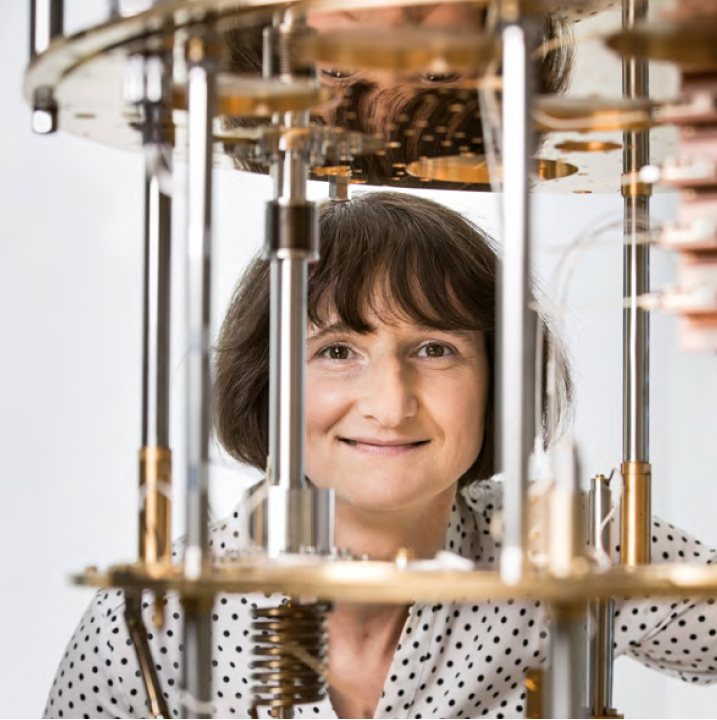Dr. Heike Riel, IBM Fellow, Head of IBM Quantum Research EMEA & Africa
Fraunhofer-Magazin 2.2021

Technological history is being made as we speak: Fraunhofer-Gesellschaft and IBM have brought today’s most powerful quantum computer for industry and research to Europe. It is a success story
of our joint contribution to the future of research and industry.
How did it all start? Right at the beginning of 2015, it was just a small IBM team of physicists at the T. J. Watson Research Center in Yorktown Heights, north of New York City, who unveiled the first 5-qubit processor after years of research in the lab. This small chip has since sparked a technological revolution that has the potential to shape the future of computing for decades to come. In May 2016, IBM made this very first quantum processor available to everyone in the cloud.
This was the moment I realized: Something very special is happening here − the start of quantum computing in the cloud.
A lot has happened since then. We were still faced with the real challenge: to build a quantum computer capable of solving tasks that can revolutionize industries but that classical supercomputers and mainframes aren’t able to handle. Applications explored so far include, for example, quantum mechanical simulation of molecules, real-time calculation of risks in investment portfolios or accelerated analysis of elementary particle collisions using AI tools.
From our perspective, this requires bringing together three powerful ways of thinking. First, the scientific mindset, which always seeks to understand the fundamental laws and causes underlying everything. Then the “roadmaps” approach, which sets out a precise roadmap for the development of technology and products over the next few years. And finally, the idea of an agile corporate and team culture, which originates from the world of software and aims to generate continuous improvements and added value within a project.
The scientific mindset is the source of new, groundbreaking ideas − such as the quantum computer. This can only happen if the people involved have a fundamental understanding of the principles and come up with the basic idea. While all this always involves high risk, it hopefully also brings great benefit and gain. And it’s not hard to guess: You need a lot of patience. In fact, with the quantum computer, it ended up taking almost 40 years to turn the idea into reality. However, a scientific mindset combined with great collaboration between universities, research institutions and industry can generate truly promising innovations and economic benefits.
In addition, a clearly defined “roadmap” for the technology is an essential step to building and coordinating an ecosystem of independent partners and their investments. We have made great progress in this direction with our development roadmap for IBM quantum computer hardware and software. It outlines how we will further develop quantum processors and, at the same time, build an open software ecosystem.
Over the next three years, for example, we will increase the number of quantum bits (qubits) on a processor to more than 1000 qubits and simultaneously optimize other parameters that affect performance. Our goal is to use the quantum computer to solve more and more complex problems and to achieve the so-called quantum advantage as soon as possible − in other words, to show that a quantum computer can crack problems that its classical counterparts can’t solve.
The variety of potential applications where quantum computers could accelerate or even enable problem solving for the first time is vast. And we will only be able to exploit the full potential of the new technology through close cooperation with companies and research institutions.
With the Fraunhofer-Gesellschaft as the world’s leading organization for application-oriented research, a key partner is now getting on board as a vital link between science and industry. The first quantum computers are moving out of the laboratory and into the hands of users from a wide range of industries. The fact that Fraunhofer, with its direct link to industry, is helping to shape this phase makes me feel very optimistic.